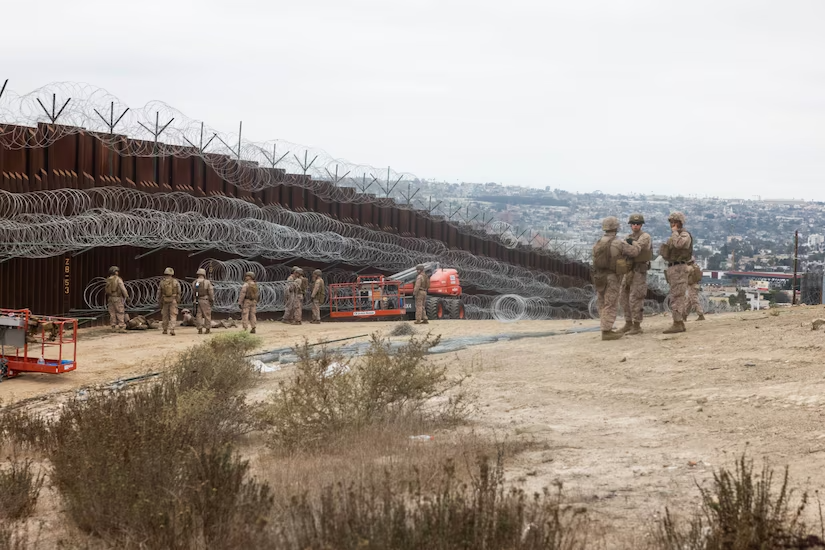-and-
U.S. Defense Secretary said morale is high among U.S. troops currently assisting with enforcement operations at the southern border.
Source: U.S. Department of Defense
By Matthew Olay
Photo: Courtesy
The Defense Department announced, Jan. 22, 2025, that is would be sending an additional 1,500 active-duty service members to the border to bolster the more than 2,500 other active-duty troops and National Guardsmen already in the region.
Senior Defense Department Officials traveled to the border, Feb. 3, 2025, to see operations firsthand and interact with the service members stationed there, many of whom serve in the pay grade of E-6 and below.

“[W]hen you meet these men and women on our border in real time, able to defend their communities, their families, their churches [and] their schools, they love that,” one official said. “[The service members are] invested in a way that’s really cool to see,” he added.
Noting that he observed a “real investment” by the service members at the border, one official said he sensed that their morale was further boosted by the realization that they’re participating in a real mission with real-world impact rather than just a routine exercise.
“When you feel like you’re just playing a bit role so some politician can say there [are] people at the border, but you’re not really doing anything, people see through that,” the official said. “That’s not what this is like. This is a real mission, and I think [the service members] respond to it [and] appreciate it,” he continued.
Regarding the overall border enforcement operation and criticisms that putting service members on the border might deter them from their ability to respond to other military contingency missions, one official said he sees the opposite happening.
“In the past, there’s been criticism that these types of rotations take away from readiness,” he said. “[But] I actually think this [border enforcement operation] — when you do it more robustly, the way they’re turning into a joint task force and it becomes a real-world exercise — I think it [actually] contributes to readiness; there’s a commitment to the mission,” he added.
In addition to the status of the service members on the border, one official was also asked about the current status of DOD utilizing Naval Station Guantanamo Bay, Cuba, to house criminal migrants. He described the facility as “phenomenal” and built for such a housing operation. “You have the hardened facility for … violent gang member types who need that kind of lockdown, and then you have — on the other side of — a place built for migrants; for those who peacefully are going to be extradited out of the United States,” it was explained.
“We’re going to find those here illegally, prioritizing those with violent or sketchy pasts, and use Guantanamo Bay as a transit way to remove them and send them back to their home ,” he said.





